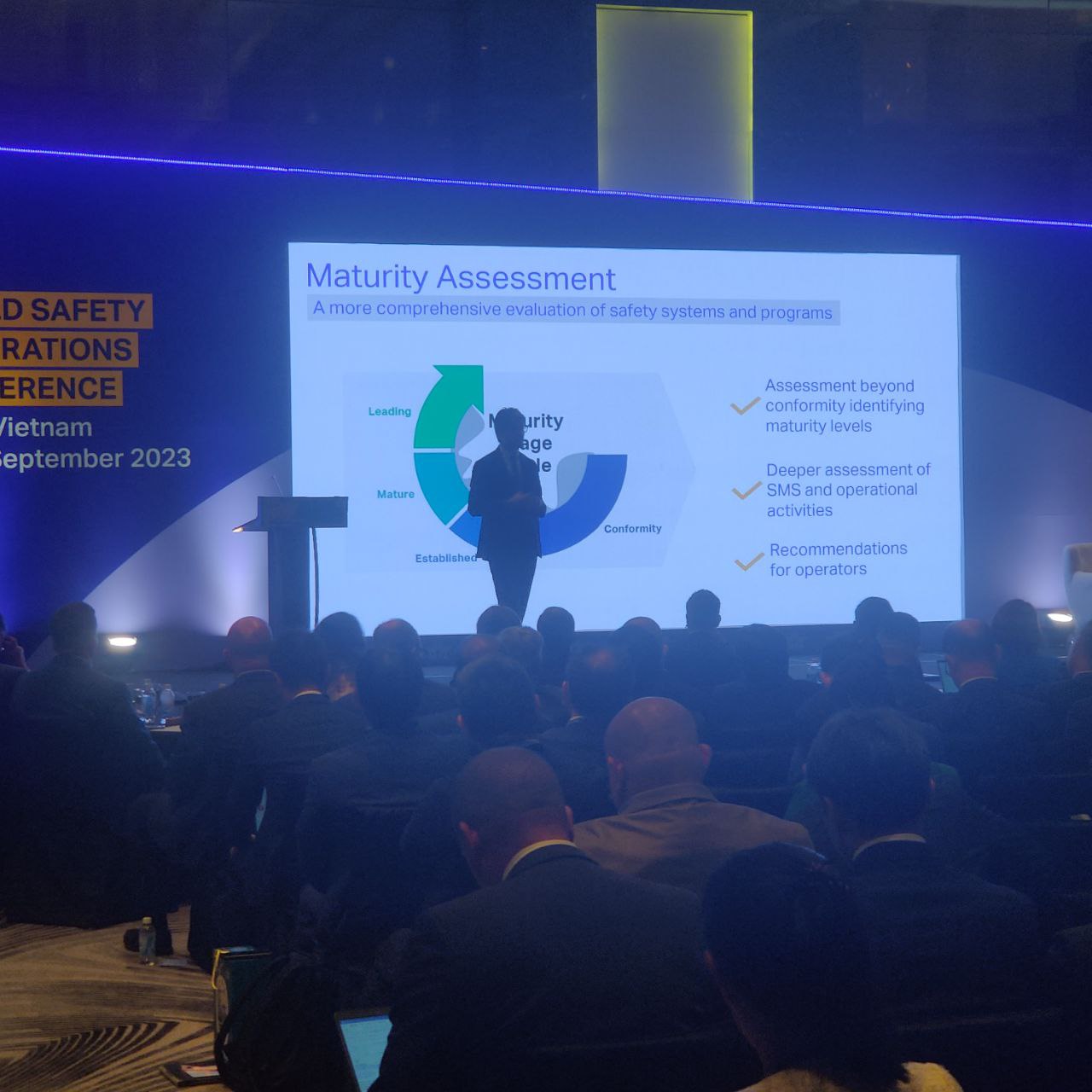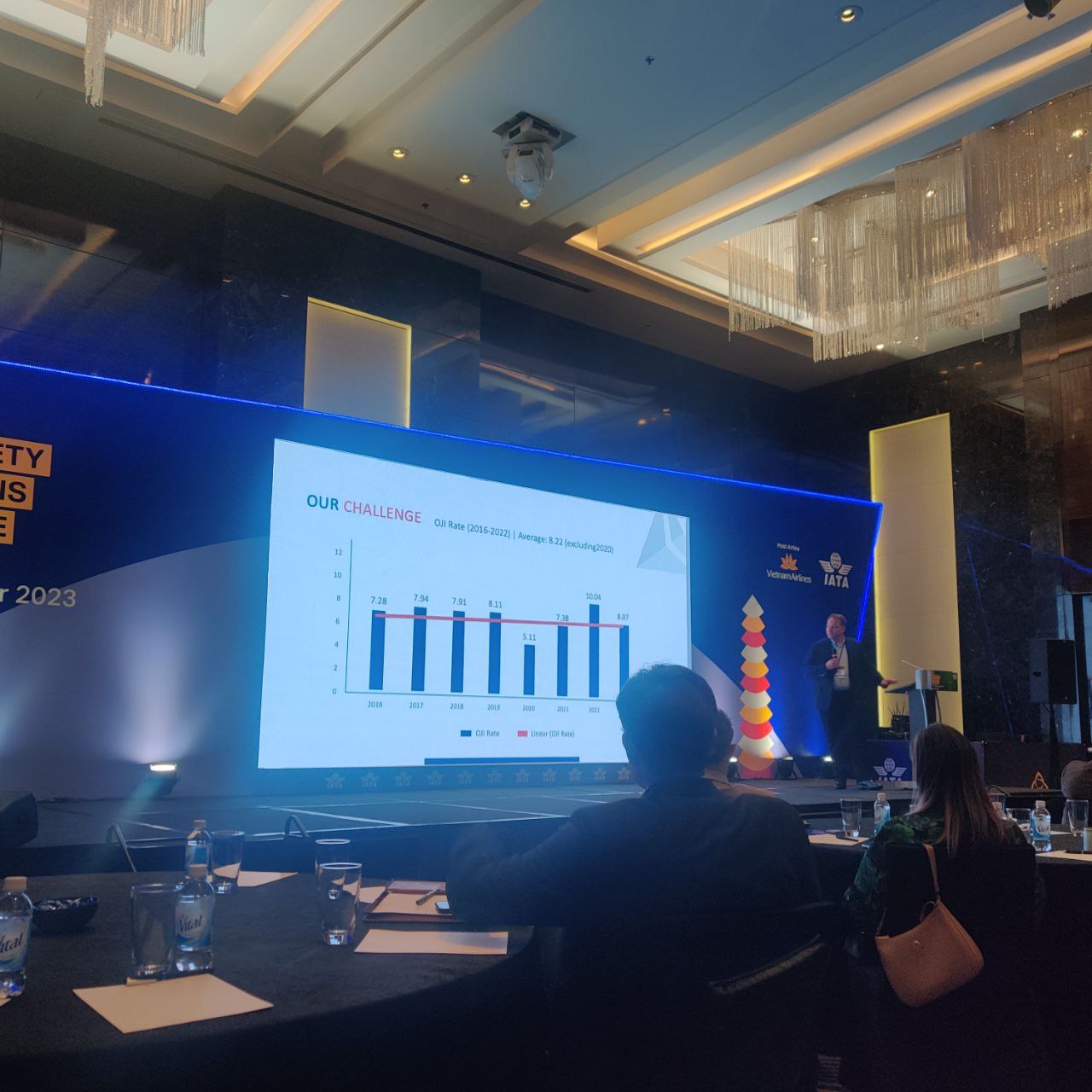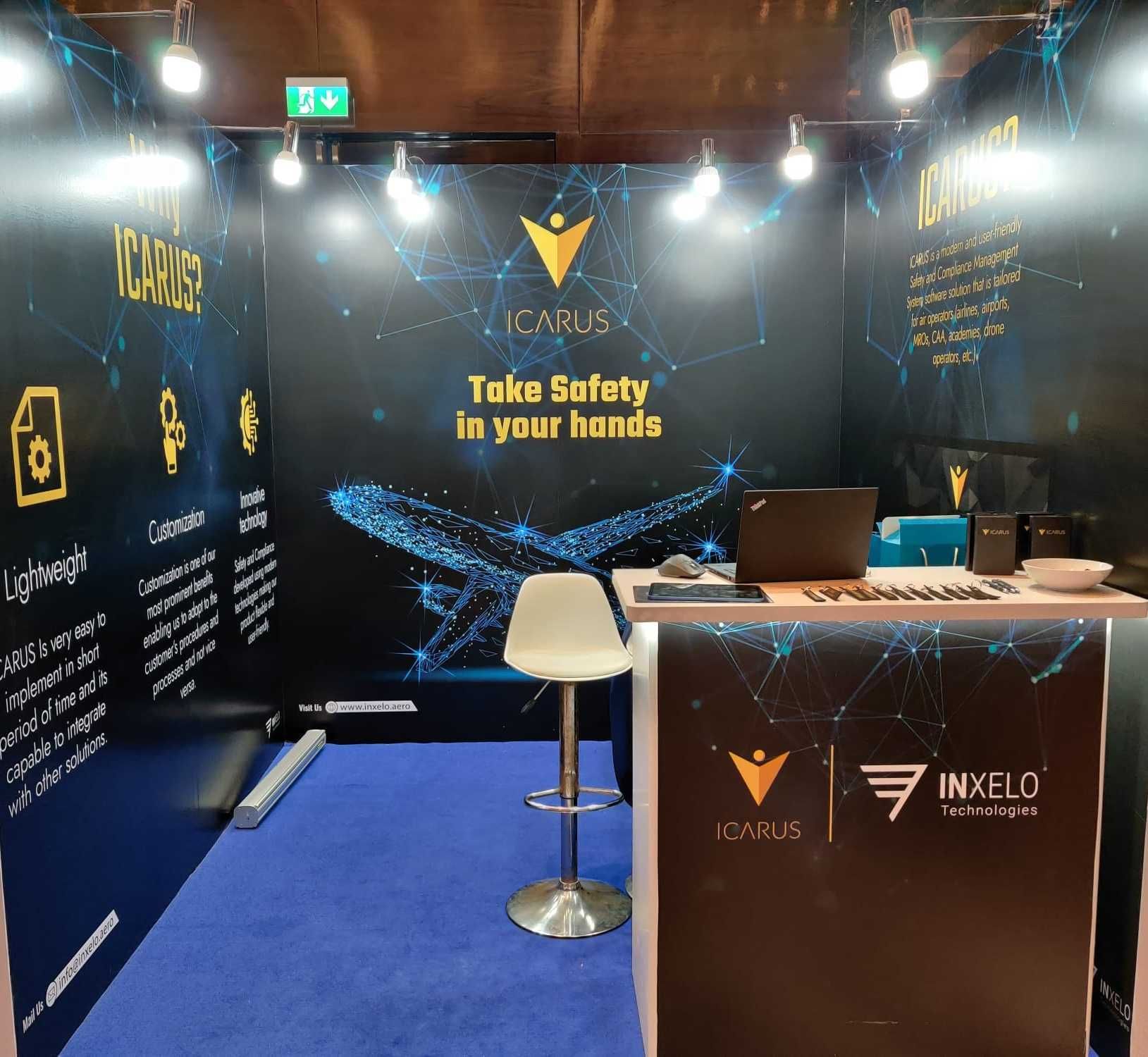HANOI, VIETNAM, 19-21 September 2023 – Our team participated at this year’s major Safety event organized by International Air Transport Association (IATA) named “IATA World Safety and Operations Conference (WSOC) 2023”. We bring you the summary of the event in this article.
IATA decided to organize 2023 event in the beautiful and lovely south-east Asian country – Vietnam in its capital city Ha Noi. The host airline was national flag carrier – Vietnam Airlines. IATA decided to experiment the conference with merging various different areas such as Safety, Operations, Cabin and ERP. From the reactions of the attendees, it seemed like a good decision as a lot of attendees could find their area of interest. The number of attendees was more than 600 people from 55 countries worldwide. The event was held at Ha Noi’s JW Marriott Hotel.
DAY 1 – 19 September 2023
In the morning as first presentation, IATA opened the conference with their usual WSOC Joint Opening Plenary where Nick Careen from IATA introduced various key people from IATA and the host airlines Vietnam Airlines as well as government officials including H.E. Luu Quang Tran as deputy of Prime Minister of Vietnam. The main part of opening ceremony belonged to the host airline and their management with Hoa Dang Ngoc (Vietnam Airlines chairman) and Ha Le Hong (President and CEO of Vietnam Airlines). Mr Ngoc mentioned that Vietnam Airlines obtained their IOSA certification and that the airline also started operations to United States back in November 2021.
After lunch, IATA broke down the sessions into before-mentioned tracks of “ERP & AR Track”, “Cabin Operations Track”, “Operations Track” and “Safety Track”.
We bring the short overview of the presentations that our team participated:
- IATA updates on all activities in aspects of Cabin Safety and Operations including Unruly Passengers, Ongoing Safety Risk Management, Cabin Crew mental health and wellbeing with keynotes from Jonathan Jasper (Senior Manager Cabin Safety, IATA), Martin Maurino (Technical Officer, ICAO).
- Risk-based IOSA was the hot topic of the Day 1 as Mark Vincent and Serkan Simitcioglu, both from IATA with the former Head Safety Risk and Quality Assurance and the latter Head of IOSA. Mr Vincent talked about the “Risk influence” as IATA utilizes data and insights to complement their risk-based approach. Risk-based IOSA shifts focus from industry standards prioritization to operator specific standards prioritization. The benefits are obvious as it focuses on identifying critical areas for each operator (as they might be different from operator to operator), frees up time to focus on high-value activities and allows for maturity assessment of critical systems and programs.
- Air India shared its experience with Risk-based IOSA as one of the first adopters. Dr. Harpreet Singh (Group Chief of QMS for Air India Group) mentioned that they performed risk-based IOSA audits, but closed findings as regular IOSA still. Praised the maturity report which gave them deeper insight of their work which was appreciated by their management. Remarks/recommendations for different areas which were not findings but good to keep an eye on it
- Another experience was shared by Qatar Airways and theirs’s Senior VP Group Safety and Security, Mr Ashish Jain which found risk-based IOSA as value-add with meaningful improvement and articulated problem areas. He pointed out few benefits such as proactive approach, quality assurance promotion and enhanced processes.

Maturity Assessment – risk-based IOSA
DAY 2 – 20 September 2023
Second day of the conference brought some of the great presentations and examples from Aviation Safety. Some of those presentations included:
- Lessons learnt from Southwest Airlines Flight 1380 with explosive depressurization incident in 2018 and how the airline dealt with the consequences presented by Elise May, Sr. Manager Inflight Safety and Regulatory Compliance Southwest Airlines
- Great presentation by Anabel Brough, Safety Manager Cabin Group at Emirates Airlines who presented evacuation on the runway at Dubai airport by their flight EK521 on 3 August 2016. Cabin crew had to deal with many challenges from passenger behavior, the environment, the aircraft in which they managed to successfully evacuate all persons onboard. Anabel mentioned that shoes now recommended to be on during evacuation as most common injury they had was burnt feet due to burning tarmac cca 50 Celsius degrees. Anabel also confirmed that simplified commands during evacuations are the best, they just say “Jump. Slide.” with two simple commands which everyone will remember. Also they recommend removing the line “leave your baggage” as then people get reminded of the baggage and actually take it
- Capt. Muhamad Nizar Abdul Bari, Director of Flight operations at MASwings shared their story how Safety plays a crucial role in their complex operations in rural Malaysian islands. This company mastered the mitigation process to Insufficient Runway Length (ASDA) as they operate in short runways. Interesting information is that they weight all the passengers with their luggage before boarding to calculate whether they can take off and if some problem occurs during take-off, their procedure is to not abort the take-off but rather follow the escape route. Also landing at Miri airport in Malaysia, the pilots during approach are looking for bats! If there is any bat flying around the airport, they proceed to cancel all flights as soon afterwards there will be thousands of bats flying out of the caves which poses serious risk to their operations.
- “Producing Safety – on a journey to zero flight attendant injuries” by Mr Sergij Novak (Director Inflight Service Health, Safety & Security at Delta Airlines) was an insightful presentation about the health challenges faced by their crew members. Mr Novak mentioned that Delta numbering over 900 aircraft have in its organization 28.000+ flight attendants and that yearly around 2.000 of them are involved in health issues. Mr Novak also gave interesting information how majority of their injuries fall under 3 categories (ergonomics, struck by and turbulence). Also shorter flights pose higher chance of injury as well as if the flight is delayed for more than 30 minutes (crew wanting to get home quicker, start doing their job reckless in a rush). Most interestingly, flight attendants with higher quality rates due to exceptional customer service tend to have an increase of chances of injury as sometimes they perform actions that puts them in higher risk in a bid to provide exceptional service.
- In one of the most intriguing presentation, Mr Kyle Ellis who is System-Wide Safety Project Manager at NASA, gave an overview of the future of safety. NASA explained moving from traditional SMS (Data collection –> Distillantion & Review –> Risk Mitigiation) to IASMS which stands for In-time Aviation Safety Management System that composes of “Data collection & Aggregation” –> “Fusion of Big data sets” –> “Risk Mitigation (interpretation of safety information and actionable safety intelligence)”. The necessary steps for IASMS involve in-time safety risk mitigation, moving from proactive to predictive safety management systems, adopting ML/AI for predictive analysis and advanced data mining, improve system agility and responsiveness, build upon existing IT architectures for increases access to data and tools.

Journey to zero flight attendant injuries – Sergij Novak (Delta Airlines)
The conference was closed by Mark Searle and special presentation by Matthew Griffin from 311 Institute who gave an exciting outlook to future in aviation which will include air mobility, artificial intelligence, vertical aircraft etc.
We look forward for the next year’s event!

ICARUS booth by Inxelo Technologies at IATA WSOC 2023 in Hanoi, Vietnam







